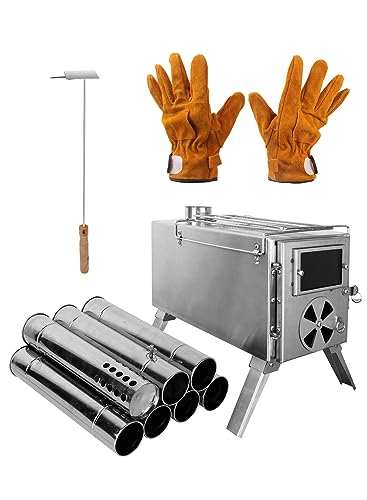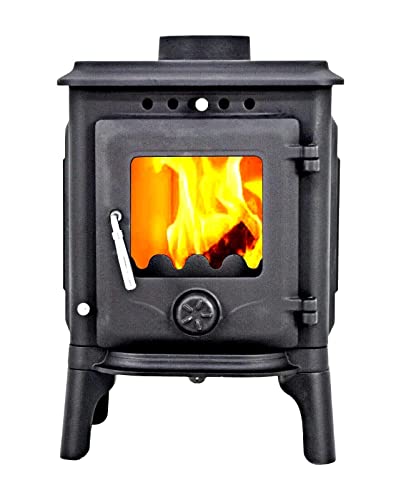How to Properly Start a Wood Burning Stove
Wood stoves can be an ideal method to reduce energy consumption and also heat rooms. However, they require some level of maintenance.
 Many modern wood stoves are compliant with EPA emission guidelines. Look for an EPA sticker under or beside the grate to make sure your stove doesn’t create many harmful pollutants.
Many modern wood stoves are compliant with EPA emission guidelines. Look for an EPA sticker under or beside the grate to make sure your stove doesn’t create many harmful pollutants.
How to Start a Wood Fire
The smell and sound of a wood fire could be a welcome addition to any home. It’s important to know how to build a fire on your stove. Improper techniques can result in a fire that doesn’t burn effectively and can cause creosote or smoke. The tips below will assist you in starting a fire that will heat your home with the least effort and ensure your safety.
Before you start an fire, make sure you check the condition of your coals and logs. If they’re wet they will choke your fire and prevent the proper burning. You may want to open the chimney to remove any ash that has fallen into the stove.
Begin by putting a handful of small dry newspaper pieces in your stove. This will help to ignite the tinder and kindling. After the tinder and kindling have started to burn, you can add the larger kindling pieces on top. This should be done with a crosshatch design so that there is air between each piece.
If your wood burning stoves uk stove is equipped with an automatic combustion control, it will automatically supply air to the flame as it grows. This allows the fire to burn continuously without the need to open the door of your stove constantly to tend to it.
It is essential to avoid using excessive tinder as this can lead to a fire that burns at an extremely high rate and fails to make use of the fuel as efficiently as it can. Once you’ve got a good foundation in your stove that is made of sparks, tinder and kindling begin the main flame by laying down two large logs of the base on the grill. Then, on top of these base logs put a layer of wood perpendicular to them. This method of constructing a fire known as a “top-down” fire can result in a successful and long-lasting fire that doesn’t engulf the larger base logs.
Close the damper when your fire has been established and kept it shut. Doing this too soon can cause the fire to be smothered, and it will not allow for proper air flow, which will decrease the efficiency of the fire.
Adding Wood
Stoves can be used to heat your home efficiently and help you save money. They can be used together with central heating systems or furnace to provide supplemental heating in large houses. Many of the latest clean burning stoves that are available on the market use advanced combustion principles that separates the burning volatile compounds from combustible gasses as well as tar. This is accomplished by supplying air in two different stages. The first stage is for the vaporization and the second stage is to provide pre-heated fresh air. This improves the process of combustion and helps to reduce the smell.
The amount of heat you get from a stove depends on the species and the moisture content of the wood used and also the dimensions of logs. To allow the wood to dry, logs should be stored in a well ventilated space for a few months prior to burning. If the logs have excessive moisture, they will create steam which is essentially wasted energy.
You should add wood to the pile in intervals and not all at all at. The addition of too much wood at once can cause the temperature to rise in the firebox, causing the formation of a vortex that draws smoke and volatile compounds that have not been burned back into flames. This could reduce the efficiency of your stove.
It is recommended to stay clear of any other combustibles, like cardboard or paper in your Stove Wood Burning (Masa-Pre-Interest.Hatenablog.Jp), since they are not wood and have different physical properties and cannot be burned without creating dangerously high temperatures and exorbitant emissions. It is not recommended to burn compressed combustibles like wood briquettes since they differ in chemical and physical composition from firewood. They are also not approved to be used in wood burning stoves.
If you’re installing wood-burning stoves in your home, it is crucial to have it installed and tested by a qualified. A certified WETT technician will test your stove to ensure it is safe and reliable. They will also check that your chimney works correctly. They provide maintenance services for your stove and chimney to ensure they remain in top condition. They can inspect the areas that are accessible to your chimney to determine if there is leakage and repair any problems found. They will also ensure that the occupants of the home understand and follow the fire evacuation procedure in case of an accident.
Adjusting the Damper
If you’re not cooking on your stove, a damper regulates the amount of heat lost through the chimney. It can also be used to control the flame. If the flue opens but the damper is closed the fire won’t ignite properly and smoke will pour into your home. You can adjust your damper to achieve the most effective flames by playing around with different positions.
It is important to keep your damper open to let air flow into and out of the flue while a fire is burning. This lets the fire get a good fire going and helps it stay lit so you can enjoy it for a long time. The right opening can stop the fire from being deprived of air and prevent it from blowing smoke.
To adjust your damper properly first, make sure that the fireplace is heated and that the wood stove is hot. This will ensure that the chimney stays warm and has a good draft. Once this is accomplished the damper for the wood stove can be adjusted.
After the fire has smolder slightly, you need to shut the damper down to about three-quarters of its original position. This will prevent the warm room air from escaping through the chimney, while allowing the smoke to escape from the wood stove.
This is the best way to keep the fire from getting too hot, while also keeping it burning. If you shut the damper too much, it may stop the draft from working, however when it’s too open a cold breeze could blow into your home.
You can determine how much the damper is open by holding your hand near the top of the of the flue pipe. If you feel a breeze pushing against your hand the damper is probably to be open.
The damper settings can differ slightly from one stove to another and even between different types of wood. The process of experimenting with the various settings will give you an idea of what you should look for, but you may need to adjust until you get the perfect setting for your stove.
Clean up
It is essential to clean your stove and flue after a fire. This can reduce the risk of a chimney fire which is the main reason for wood stove-related fires in homes. Creosote is a sticky material that builds up on the stovepipe’s interior and can be very dangerous. Moisture and unburned particles of wood that are unable to escape the flame are the reason for this chemical. This can also occur by fires that are not properly lit.
Regular cleaning can help prevent creosote buildup. This can be done by cleaning your chimney once every year. It is also recommended that you get your stove and fireplace professionally cleaned and stove wood burning inspected at least once a year.
It is also an excellent idea to clean the Ash tray and grate frequently. It is recommended to use only seasoned wood for burning, as it will create less creosote and less ash. Avoid burning cardboard, paper and plastic. These can release chemicals that are dangerous for Wood Burners the respiratory tract and the air, which could be released into your home.
It is also necessary to clean the glass of the wood-burning stove regularly. The majority of modern wood stoves have self-cleaning windows so they don’t require as much scrubbing. If you’re not able to make the glass on your wood stove as clean as you would like, there are stove glass cleaners you can use on the window.
 Other ways to maintain your wood stove include lowering the vent when you’re not using it, and cracking windows or doors to improve airflow. This will help keep the fire burning longer and more efficiently, since it won’t have to work as hard to circulate air. It is also a good idea to not stack logs or keep them in the flame for long periods of time, as this can lead to warping and splitting. It is also best to avoid using compressed combustible wood logs in your wood stove, because the paraffin in them can melt and flow into the flue which could cause damage to the stove.
Other ways to maintain your wood stove include lowering the vent when you’re not using it, and cracking windows or doors to improve airflow. This will help keep the fire burning longer and more efficiently, since it won’t have to work as hard to circulate air. It is also a good idea to not stack logs or keep them in the flame for long periods of time, as this can lead to warping and splitting. It is also best to avoid using compressed combustible wood logs in your wood stove, because the paraffin in them can melt and flow into the flue which could cause damage to the stove.
